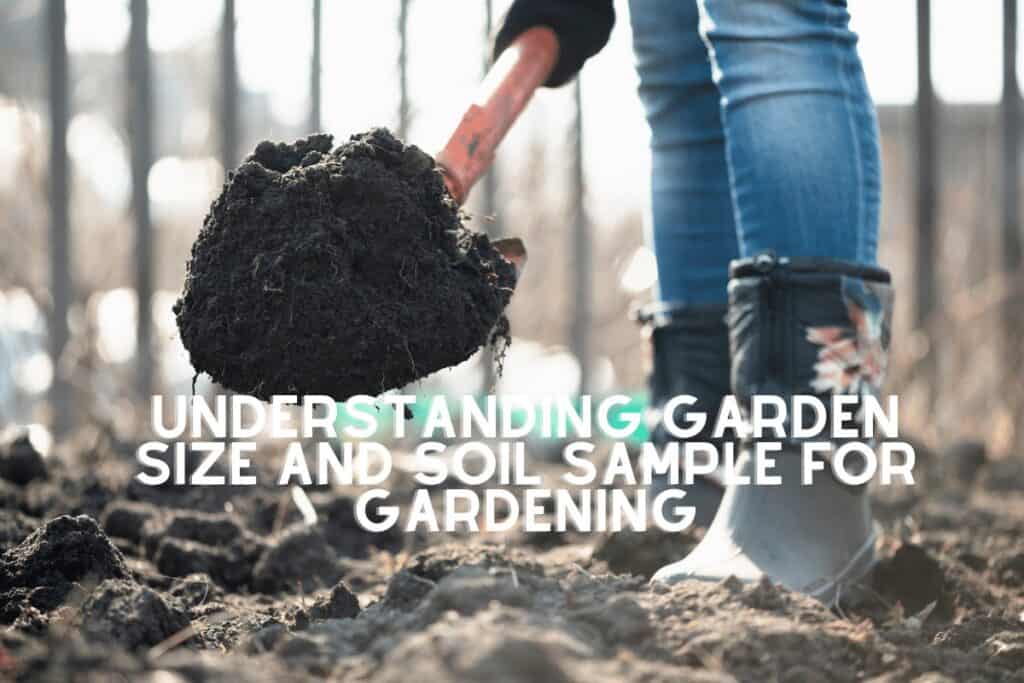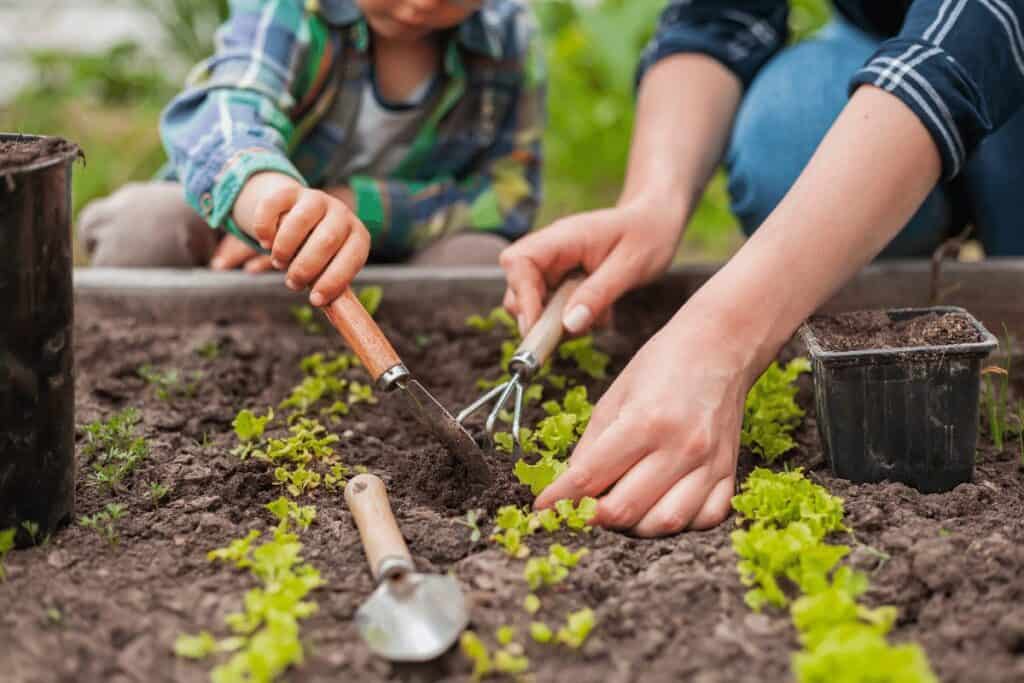Gardening is an enjoyable activity that provides a sense of accomplishment and connection to nature. However, planning and preparation are necessary for a successful gardening experience. This article Understanding Garden Size and Soil Sample for Gardening will cover two important aspects of gardening: garden size and soil sample.
Garden Size

Garden Size Calculator: Plan Your Garden Layout More Easily
Determining the size of a garden can be challenging, whether you’re a professional landscaper or a DIY gardener. The garden size calculator [1] is a helpful tool for determining the size of a garden. This online tool requires only the measurements of the garden space and will calculate the total square footage for you. With this information, you can plan your garden layout more easily.
Different Gardening Methods: Choose the Right Garden Size for Your Needs
Different gardening methods require different garden sizes [2]. From traditional garden beds with rows of crops to raised beds, container gardening, keyhole gardening, and square-foot gardening, to more advanced methods like hydroponics, aquaponics, or space-efficient vertical gardening. It’s important to choose the right garden size for your needs, depending on the method you choose.
An analogy for different gardening methods could be choosing the right size of a shoe. Just as different shoe sizes fit different feet, different gardening methods require different garden sizes.
Soil Sample

Testing Soil for Acidity and Alkalinity: Collect a Soil Sample
Soil is the foundation of a garden, and testing the soil for acidity and alkalinity is important for healthy plant growth [3]. To test soil for acidity, collect a soil sample from the garden area, and add half a cup of water, followed by half a cup of baking soda. If the soil fizzes, it’s acidic. To test soil for alkalinity, collect a soil sample from the garden area, and add half a cup of water to the sample, followed by half a cup of household vinegar.
Sleek space Soil Probe

Small Soil Sampler Bags. 20″ Soil Sample Probe Rod. Patent Pending Ground Probe Design for Tidy Strata in Soil Test Sampling
- ✅ Solves The 3 Major Soil Probing Concerns:
- 🍃 Like A Hot Knife Through Butter:
- 🌱 No Clogs… Just Plugs!
- 🔨 A Handle Like No Other:
- 🌳Clean, Tidy Layers:
Importance of Soil Sample
Testing the soil sample helps to determine the soil’s pH level, which is essential for healthy plant growth. It also helps to determine the nutrients present in the soil. Different plants have different nutrient requirements, so knowing the nutrient content of the soil can help to determine the right plants to grow.
An analogy for soil sample testing could be a doctor checking a patient’s blood pressure and cholesterol level. Just as these tests provide information about the patient’s health status, soil sample testing provides information about the soil’s health status.
FAQs
What is the normal size of a garden?
The normal size of a garden can vary depending on the intended use and the location. According to YardKidz, a vegetable garden size should be 100 square feet per person you intend to feed, and the size may change based on your specific situation [1].
However, the normal size of a garden can also refer to a typical residential garden, which can range from a small backyard garden to a large estate garden. There is no set standard for the normal size of a garden as it can vary based on personal preference and the amount of available space.
What is the best size garden for beginners?
For beginners, a 10 x 10 garden (100 square feet) is a great place to start, according to Today’s Homeowner. It is recommended to pick 3-5 of your favorite veggies and buy 3-5 plants of each one, which will give you a modest harvest for summer suppers and it will be easy to manage [2].
What is the ideal size for a vegetable garden?
The ideal size for a vegetable garden can vary depending on the number of people you intend to feed. According to YardKidz, as a general rule, the vegetable garden size should be 100 square feet per person you intend to feed.
For example, for an average family, the ideal size of a vegetable garden can range from 300-500 square feet [1]. However, the ideal size for a vegetable garden can also depend on personal preference and the amount of available space.
How many square feet is a normal garden?
The square footage of a normal garden can vary depending on the intended use and location. According to YardKidz, a vegetable garden size should be 100 square feet per person you intend to feed, but the size may change based on your specific situation [1].
The size of a normal garden can also refer to a typical residential garden, which can range from a small backyard garden to a large estate garden. There is no set standard for the square footage of a normal garden as it can vary based on personal preference and the amount of available space.
How big should a garden be for a family of 4?
For a family of 4, the size of a garden can vary depending on the number of vegetables they want to grow and the frequency of their harvest. According to YardKidz, a vegetable garden size should be 100 square feet per person you intend to feed.
Therefore, a garden for a family of 4 can range from 400-500 square feet. However, it is recommended to start with a smaller garden size, such as 300-400 square feet, until you have a better understanding of your gardening needs [1].
What is a good garden layout?
A good garden layout can depend on personal preference, the available space, and the intended use of the garden. According to Embracing Harvest, if you are a beginner or want to keep it simple, start with 2-3 raised beds or 50-100 square feet. Some recommended garden layouts are raised beds, square-foot gardening, or traditional row gardening.
It is important to consider factors such as sunlight, irrigation, and soil quality when designing a garden layout [3]. Ultimately, the best garden layout is one that suits your needs and allows for easy maintenance and harvest.
Conclusion
In conclusion, understanding garden size and soil sample testing are essential for a successful gardening experience. The garden size calculator and knowledge about different gardening methods help you to choose the right garden size for your needs. Testing the soil sample for acidity and alkalinity helps to determine the soil’s pH level and nutrient content, which is essential for healthy plant growth.
Latest Posts
- What Types of Lettuces Can You Grow?

- How to Plant Onion Seeds for Maximum Germination

- How to Plant Parsnip Seeds for Maximum Germination

- How to Plant Mushroom Seeds for Maximum Germination

- How to Plant Lettuce Seeds for Maximum Germination

- How to Plant Kale Seeds: A Step-by-Step Guide to Maximum Germination Success!





